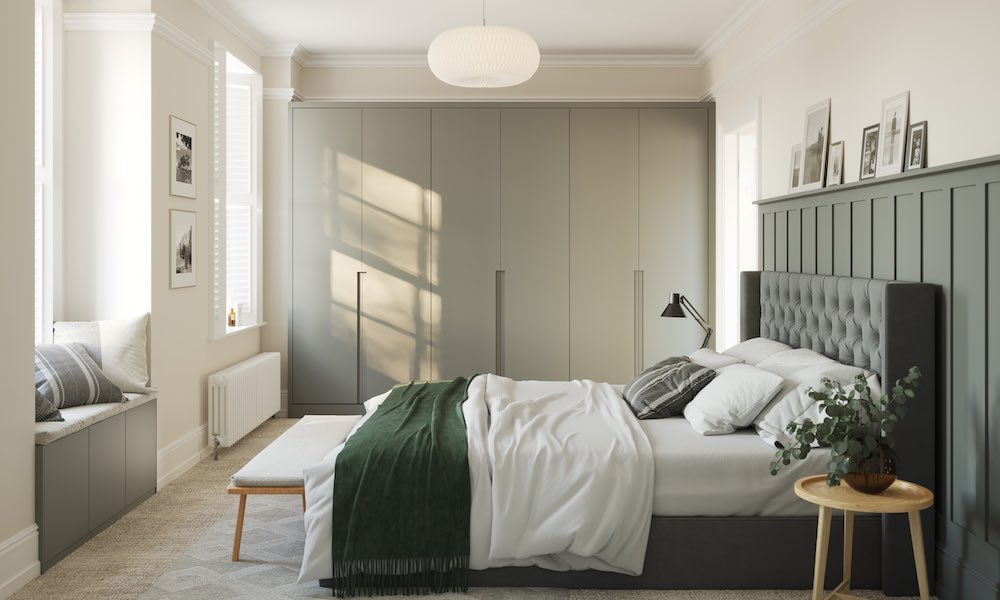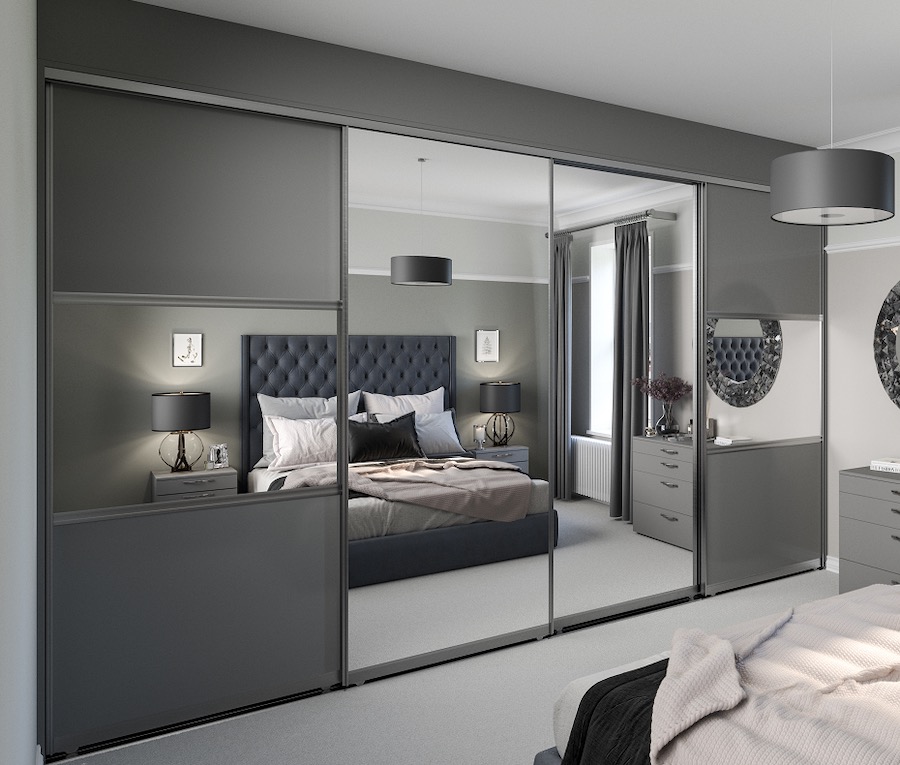
Bedrooms Frequently Asked Questions
We get asked lots of questions by our valued customers – hopefully we can answer some of yours here.
Q. What are bespoke fitted wardrobes
A. Bespoke fitted wardrobes are customised storage solutions designed to fit perfectly within a specific space in your home. Unlike freestanding wardrobes, which come in standard sizes and designs, bespoke fitted wardrobes are tailored to the exact measurements and requirements of your room.
Q. What is the difference between built-in and fitted bedroom furniture?
A. While there is some overlap between the terms, built-in furniture typically refers to items that are constructed as part of the room’s structure, while fitted furniture is custom-made to fit a specific space within a room. Both options offer the advantage of maximising space and creating a cohesive aesthetic to the room.
Q. What are the three design consideration for a bedroom?
A. When designing a bedroom, there are several key considerations to keep in mind to ensure a functional and visually appealing space. While there are more than three factors to consider, here are three important design considerations for a bedroom:
1. Layout and Spatial Planning: The layout and spatial planning of a bedroom are crucial to creating a comfortable and functional space.
2. Lighting: Lighting plays a vital role in setting the mood, enhancing functionality, and creating ambiance in a bedroom.
3. Colour Scheme and Atmosphere: The colour scheme and overall atmosphere of the bedroom greatly impact its visual appeal and the mood it evokes.
Q. How much will a bespoke bedroom cost?
As a rough estimate, a fully fitted bespoke bedroom, including built-in wardrobes, storage units, and other customised features, can start from a few thousand pounds and go up to tens of thousands, or even more, depending on the aforementioned factors. The cost breakdown should include:
Q. What is a traditional bedroom design?
A. A traditional bedroom design refers to a style that draws inspiration from classic and timeless elements, often reflecting historical or period aesthetics. It is characterised by a sense of elegance, warmth, and familiarity.
Q. What is a contemporary bedroom design?
A. A contemporary bedroom design refers to a style that is characterised by clean lines, simplicity, and a focus on functionality. It embodies a modern and up-to-date aesthetic, often incorporating elements of minimalism and sleek design.
Q. What is transitional bedroom design?
A. Transitional bedroom design is a style that combines elements of both traditional and contemporary design, resulting in a balanced and timeless aesthetic. It blends classic and modern elements to create a harmonious and versatile space.
Q. What is the 60-30-10 rule in interior design for your bedroom?
A. The 60-30-10 rule is a guideline commonly used in interior design to create a well-balanced colour scheme. It suggests allocating percentages of 60%, 30%, and 10% to different colours within a space. While the rule is not a strict requirement, it can serve as a helpful starting point for achieving visual harmony. Here’s how the 60-30-10 rule can be applied to your bedroom:
Q. What are the colour trends for the bedroom in 2023?
A. It’s difficult to predict specific colour trends for bedrooms in 2023, as trends can vary and evolve over time. In recent years, there has been a shift towards soothing and calming colour palettes in bedroom design. Neutral tones, soft pastels, and nature-inspired hues have been popular choices. Shades of grey, beige, cream, and taupe have been commonly used as base colours, creating a serene and tranquil ambiance. These neutral colours provide a versatile backdrop for various decor styles and allow for easy coordination with other elements in the room. It’s worth noting that colour trends can vary based on personal preferences, cultural influences, and regional differences.


BOOK A FREE DESIGN CONSULTATION ON 01527 850 027
Our Promise
If you would like to explore how our team can help your Kitchen, Bedroom, Home Office and Storage dreams come true – then contact us today.
KLR Interiors

21A Alcester Road
Studley
Warwickshire
B80 7AG
T. 01527 850 027
M. 07815 089 558
E. sales@klrinteriors.co.uk
